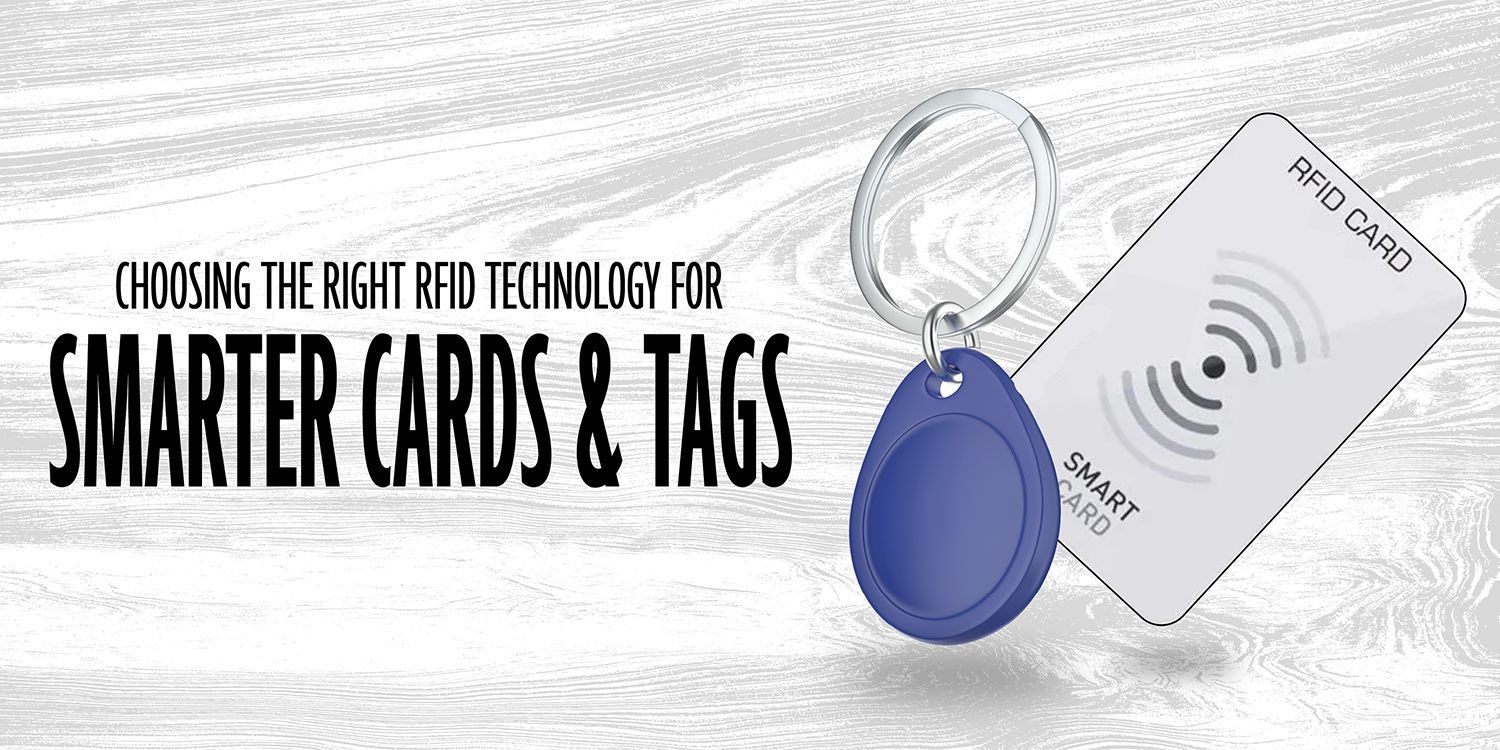Choosing the right RFID technology for smarter tags and cards, contribution by RFID4U
RFID4U has contributed to an article for the Asmag.com The Global Security Web magazine, on how to choose the right RFID technology. You can see it here:
Choosing the right RFID technology for smarter cards and tags.
Introduction
RFID technology has transformed the way we interact with smart cards and tags. Whether it’s tapping your metro card at the station, making a contactless payment, or tracking inventory in a warehouse, RFID plays a crucial role in seamless and secure transactions.
But with different types of RFID technologies available, how do you choose the right one? In this guide, we’ll break down the different RFID frequency ranges, key factors to consider, and real-world applications to help you make an informed decision.
Understanding RFID Technology
Radio Frequency Identification is a wireless technology that uses radio waves to transfer data between a tag and a reader. It enables automatic identification, authentication, and tracking without requiring direct contact.
How RFID Works in Smart Cards and Tags
An RFID system consists of:
- RFID Tag – Embedded in smart cards or labels, containing a microchip and antenna.
- RFID Reader – Captures data from the tag when within range.
- Backend System – Processes the data for various applications (payment, access control, inventory tracking, etc.).
Different Frequency Ranges and Their Use Cases
RFID operates at three primary frequency ranges, each suited for different applications:
1. Low Frequency (LF) – 125-134 kHz
- Short read range (up to 10 cm)
- Used for access control, animal tracking, and vehicle identification
2. High Frequency (HF) – 13.56 MHz
- Medium read range (up to 1 meter)
- Commonly used for contactless payments, public transport cards, and NFC-enabled devices
3. Ultra-High Frequency (UHF) – 860-960 MHz
- Long read range (up to 10 meters)
- Ideal for inventory management, asset tracking, and logistics supply chain.
Factors to Consider When Choosing RFID for Smart Cards & Tags
1. Application Requirements
Before selecting an RFID type, define the use case.
Access Control – LF or HF RFID offers secure, short-range identification, making it ideal for door entry systems, employee badges, and restricted-area access.
Payments & Ticketing – HF/NFC enables fast, secure, and contactless transactions, commonly used in credit/debit cards, mobile payments, and public transport fare systems.
Inventory & Asset Tracking – UHF RFID provides long-range scanning, allowing businesses to track assets, monitor inventory, and streamline logistics in warehouses and supply chains.
2. Read Range & Performance
Do you need short-range or long-range RFID?
Short-range (LF & HF) – Secure and limited to close proximity (ideal for payments and secure access).
Long-range (UHF) – Suitable for tracking multiple items from a distance, making it ideal for warehouses and logistics.
3. Security & Data Encryption
Security is crucial, especially for payment and personal data applications. HF/NFC provides encryption and authentication features, while UHF is more focused on tracking.
4. Material Compatibility
Smart cards and RFID tags are embedded in different materials (plastic, paper, metal, etc.). Ensure compatibility with your chosen RFID technology. For instance, UHF can struggle with metal surfaces unless specially designed.
5. Integration with Existing Systems
Ensure the RFID technology you choose works with your current infrastructure, such as POS systems, security systems, or inventory management software.
Comparison of RFID Technologies for Smart Cards & Tags
| RFID Type | Features | Pros | Cons | Common Applications |
|---|---|---|---|---|
| LF (Low Frequency) | Short range (up to 10 cm), works well in water & metal environments | High security, ideal for close-range applications | Slower data transfer, short read range | Access control, animal tracking, vehicle ID |
| HF/NFC (High Frequency) | Medium range (up to 1m), supports encryption | Fast transactions, secure data transfer | Not ideal for long-range tracking | Contactless payments, ticketing, authentication |
| UHF (Ultra-High Frequency) | Long-range (up to 10m), high-speed reading | Ideal for tracking multiple items at once | Can be affected by metal & liquid interference | Asset tracking, inventory management |
Industry Use Cases & Examples
1. Banking & Payments (RFID-Enabled Credit/Debit Cards)
Tap-to-pay credit/debit cards use HF/NFC technology, making transactions faster and more secure without needing to insert the card into a machine.
2. Public Transport (RFID-Based Transit Cards)
Most metro and bus systems use HF RFID or NFC for seamless, contactless travel, allowing passengers to tap their cards for quick entry.
3. Healthcare (Patient ID & Access Control)
Hospitals use RFID wristbands (HF or UHF) for patient tracking, ensuring the right care is given to the right patient. RFID also secures restricted areas like drug storage rooms.
This is custom heading element
Retailers and warehouses rely on UHF RFID for managing stock levels in real-time, reducing errors and improving efficiency.
Conclusion
Choosing the right RFID technology for smart cards and tags depends on factors like security, read range, and application needs. LF, HF/NFC, and UHF RFID each serve distinct purposes, from secure access control to long-range asset tracking.
By understanding these differences, you can select the best RFID solution for your business or personal use. Whether you’re implementing contactless payment cards, transit passes, employee access badges, or inventory tracking tags, choosing the right RFID technology ensures efficiency, security, and seamless performance.
